GERANIUM
This is an airy and modern restaurant with large and round comfortable tables, beautiful drawings of flowers on the walls and relaxed looking yet well-orchestrated precise service. The dinner is comprised of about five amuses, ten small dishes and five sweets. There is no meat served and the overall gustatory principle that ties the dishes together is the contrast between bitter-salty and acidic flavors. Don’t expect too many sweet vs sour or fatty vs acidic contrasts as the chefs seem determined to banish fat and gelatinous tastes and textures in their cuisine. Even a normally rich turbot fish—or rather a small slice of it—is served devoid of its natural collagen and, its stuffing, a langoustine, tastes cottony. Lovers of Elkano-style grilled turbot will be disappointed, but maybe if you are used to the white fleshed soft textures of some nigiri sushi, you will enjoy Geranium’s version of turbot and find it subtle. Personally I found it bland and disrespectful of turbot’s integrity.
At the same time, I enjoyed most of the dishes. I thought that Geranium chefs strike a very good balance between crisp-grassy-bitter tastes on the one hand, and refreshing, aromatic-citrusy tastes, on the other hand. To deepen the flavor of dishes they make ample use of fermented products or, inject some drops of a sauce rich in umami (like colatura di alici, garum, shirako, etc). Yet there is restraint in doing this. This is a mature cuisine characterized by a careful calibration of a few ingredients. Overall there is balance and harmony, combined with technical proficiency and aesthetic beauty. A case in point is “lightly pickled yellow beetroots ‘Roi Soleil’, sea buckthorn, sol & goat cheese”. A rose made from golden beetroots marinated in buckthorn juice and, leaves, made of creamy goat cheese and dried egg yolk. Sure this is amazingly beautiful but the aesthetic search here does not come at the expense of taste. On the other hand, some of the dishes, including this one, lack the extra dimension to call them extraordinary.
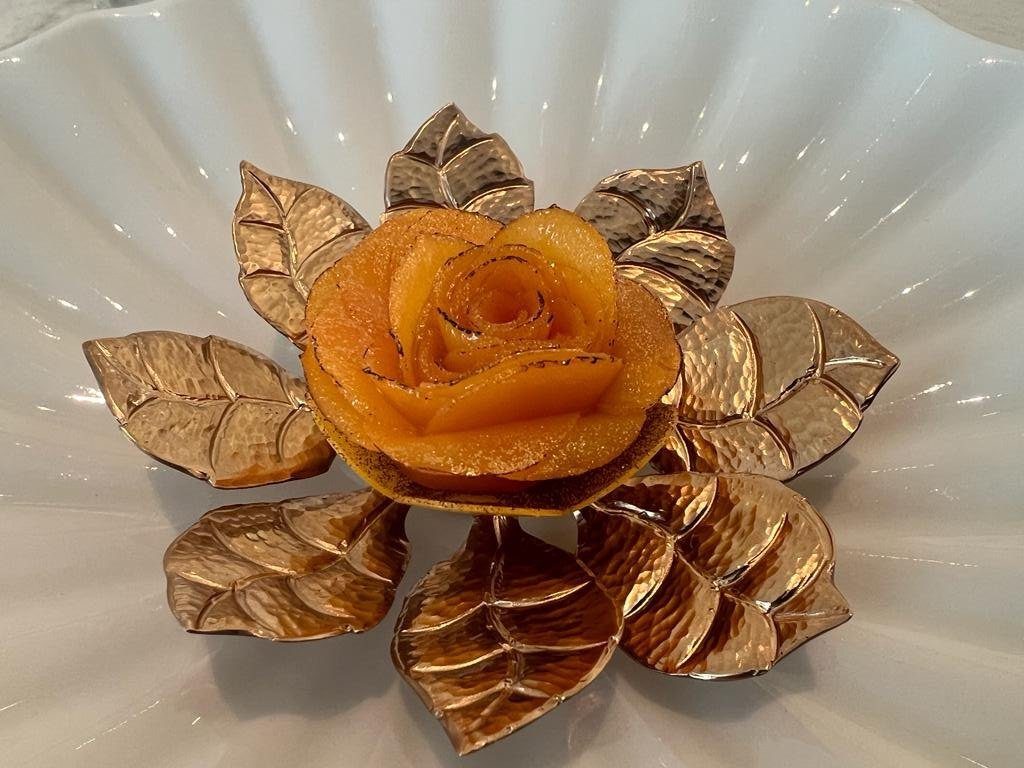
But are there no memorable dishes? In my opinion at least two of the dishes flirted with greatness. One was “Boiled beetroots, ‘Birkemose gard’ dried blue berries and horseradish”. The beetroot was cooked whole with its skin and split open on the table. This dish has a captivating melting texture and the mussel-horseradish bouillon, a kind of dashi, highlighted the sweet-spicy-tart-fruity components of the dish without masking their flavor. The other was “Spring greens kiselgarden, flowering brussels sprouts, leeks and wild onions”. Wild ransom, wild onions, mizuna and wild leeks (calcots), and various herbs also featured in this dish, which celebrated the arrival of spring, and the yuzu and fresh cheese infused green oil tied disparate elements together and added a new dimension. The garlic flower was expertly deep fried, and this nuance was a welcome textural contrast. Overall this dish was a triumph where aesthetic beauty and deliciousness were in perfect harmony.
I was also impressed with the chef’s take on woodsy-underbrush flavors in the last dish he served following the scallops and the turbot. It was described as “Forest mushrooms, beer, smoked egg yolk, pickled hops and rye bread”. All three dishes displayed three common characteristics: expert calibration of flavors where each ingredient also shines, impressive clarity and purity, and a unique style reminiscent of a Kaiseki master in Kyoto.
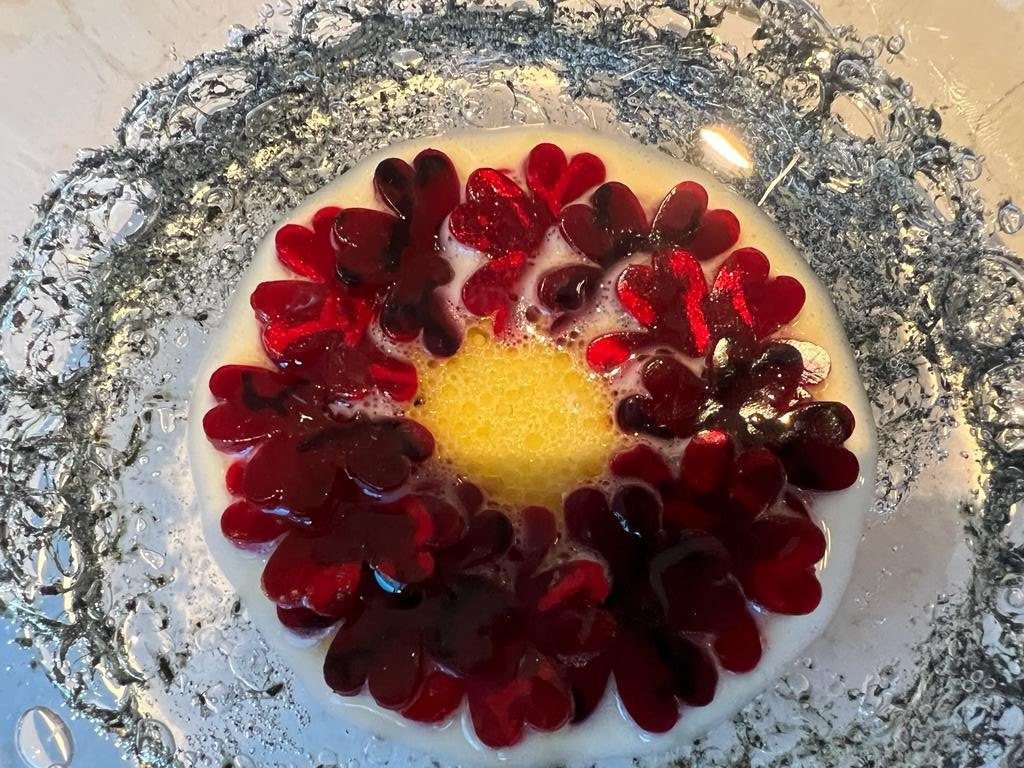
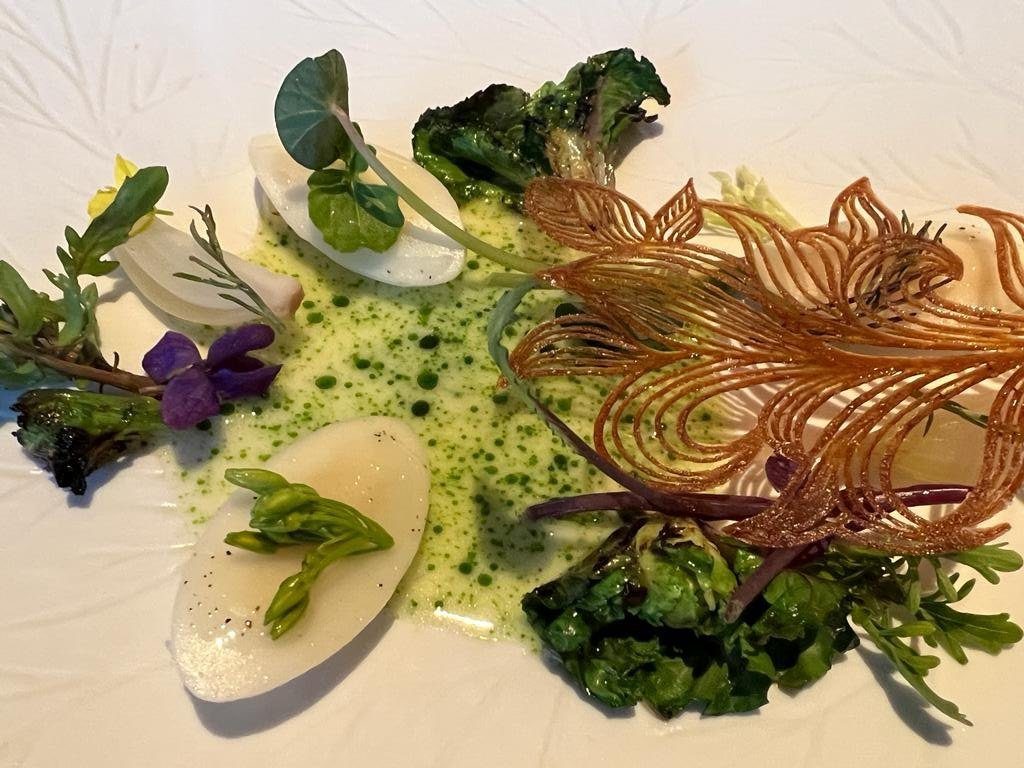
In my opinion Geranium should forgo not only meat but also fish in their menu. I don’t know many restaurants outside of Japan where the aesthetic search and deliciousness don’t come at the expense of each other. Clearly Geranium puts a premium on kaiseki-style presentations, but some dishes go beyond mere beauty and harmony and are also delicious. Chef Rasmus Kofoed is clearly very strong technically, and his cuisine is more for the gourmets than the gourmands.
EVALUATION: 16/20
ALCHEMIST
I strongly recommend Alchemist for an amazing spectacle which brings various arts together: music, opera, film, theater, fashion, dancing, and last but not least, gastronomy. The show takes place in five different rooms in the same building, each with a separate identity that fits the occasion. You are (supposed to be) dumbfounded from the moment you step in, when the heavy metallic door opens. The show begins with a folk singer whose deep voice transports you to a different era. The second step is entry to the cocktail lounge which is a post-modern glass walled space where you nibble the amuses, start imbibing your bubblies, and become acquainted with your server. They tailor your server to your personality and interests and, in our case, the symbiosis was perfect. The third chamber is the main auditorium where you sit for at least three hours over 30-40 nibbles, eyeing moving images of the past century featuring a well-known cast (Martin Luther King, Kennedy, Pope…), while also raising your consciousness about current ills that plaque our planet. Once exculpated from your sins, you are allowed some “guilty pleasure” in the pink room where a belly dancer licks her fingers with white chocolate and liquor cream, and challenges you to do the same. The closing chapter embellished with petit fours and a cubic margarita takes place in the balcony, with the most amazing lighting and light fixtures hanging above you and the young chef sitting next to you and inquiring about your opinion.
I guess my opinion will not differ from most of you. The whole thing is unforgettable. We would have been happy even with crappy food but, lo and behold. The food is actually good!
How good is it? It actually consists of mostly tasty small bites of luxurious ingredients. My main complaint is that I was expecting more daring and seasonal cuisine than I found here. Seasonal ingredients, such as wild garlic, wild leek, fresh ransom, asparagus, sea buckthorn, wood sorrel, fresh peas, morels, etc.; did not much feature on the menu. Therefore, we did not get a taste of spring. Instead the cuisine was very rich in umami, salty and intense, but somehow some bites missed a component to counter-balance the umami, and the overall sequence of the courses was not well thought out. Personally I am fond of salty umami flavors, but overusing it can tire the palate. I suppose the existence of test kitchens and scientific labs where too many people work, make it harder to achieve balance and to take advantage of the best of seasonal ingredients.
Alchemist calls the 50 or so nibbles “impressions” and frankly their narrative in the beginning of the meal about their “holistic approach” to cuisine is a little patronizing and puerile. At the same time some “impressions” made good impressions. The smokey ball (made from almond puri milk), stuffed with langoustine and topped by Belgian imperial caviar, was well thought out and delicious. When you take a bite, the smoke escaped from the puri, and the initial smoked and sweet taste of langoustine was complemented by salty brine and the crunch of caviar. This was followed by a rather strange concoction of a semi sweet dumpling filled by herbs, pickled bok choy, and five-year fermented jellified garum. This is a rather curious combination which seems conceptually interesting, but a little tiring (too much umami-salinity from the garum) for the palate in the beginning of the meal. But the next nibble was the most problematic of all: caviar on “brioche”. We were told that they had an MIT Ph.D. student who apprenticed here and wanted to emulate a bread made from milk protein that can be eaten in space. The beluga Belgian caviar was outstanding, but the airy and spongy bread tasted like eating plastic. Here, obsession with molecular cooking and novelty took the upper hand over taste.
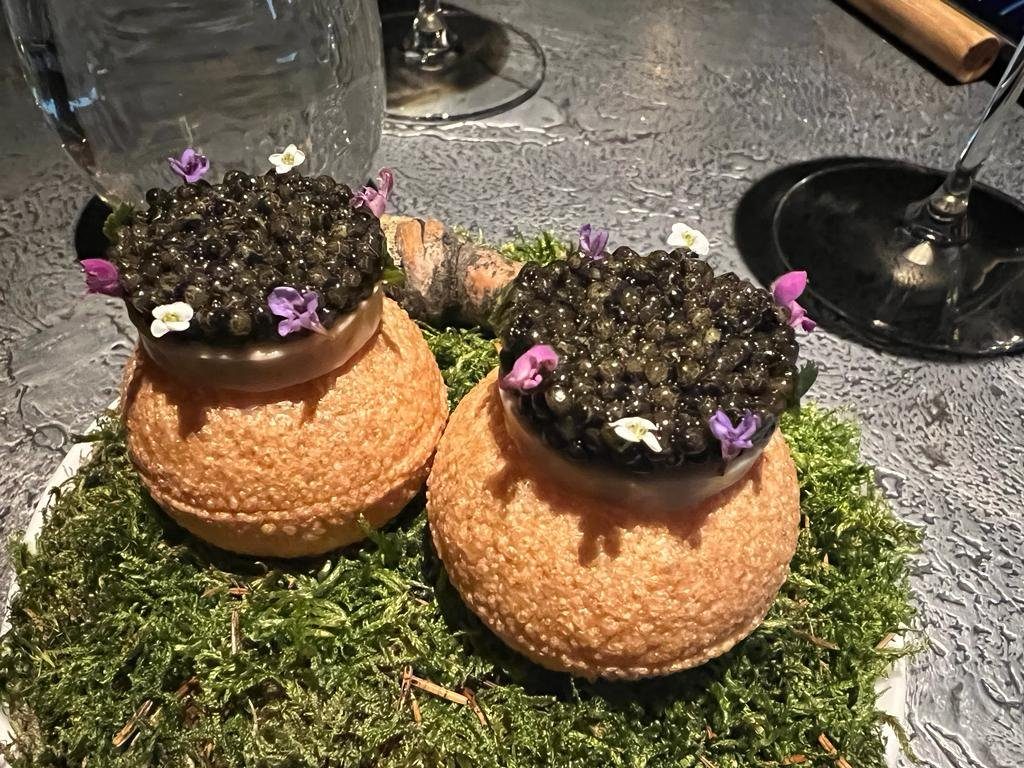
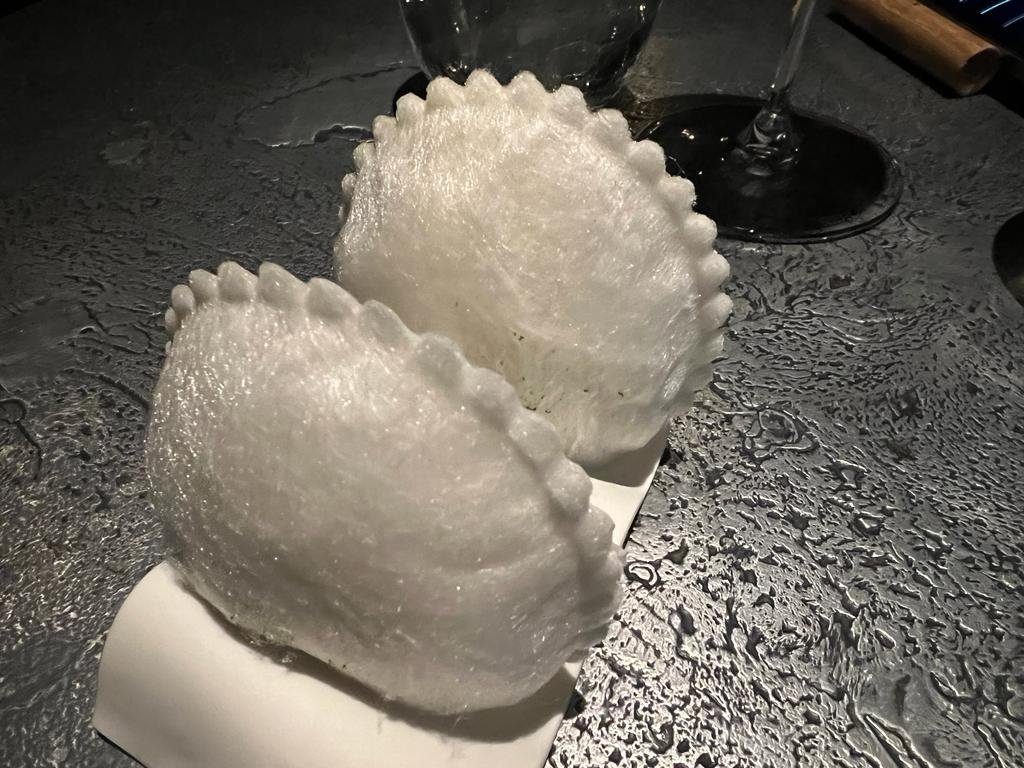
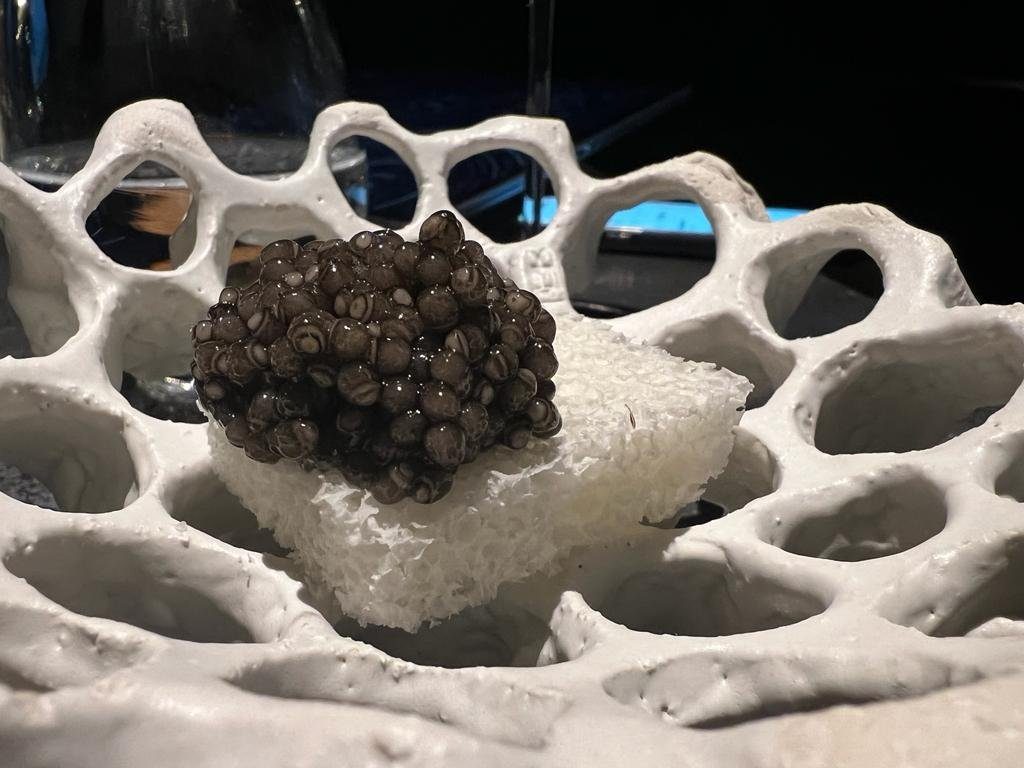
I talked about plastic taste. Plastic actually featured in the main part of the meal, consisting of larger “impressions”, that we had in the dome (auditorium). “Plastic- Fantastic” was a dish made of cod fish, smoked bone marrow and edible plastic (de-hydrated cod fish skin), presented like fish on a boat swimming in the ocean, but covered with plastic. I would not say that the dish was among my favorite sea-land concoctions, but it was rich, creamy, sweet and intense. It also paired very well with sake.
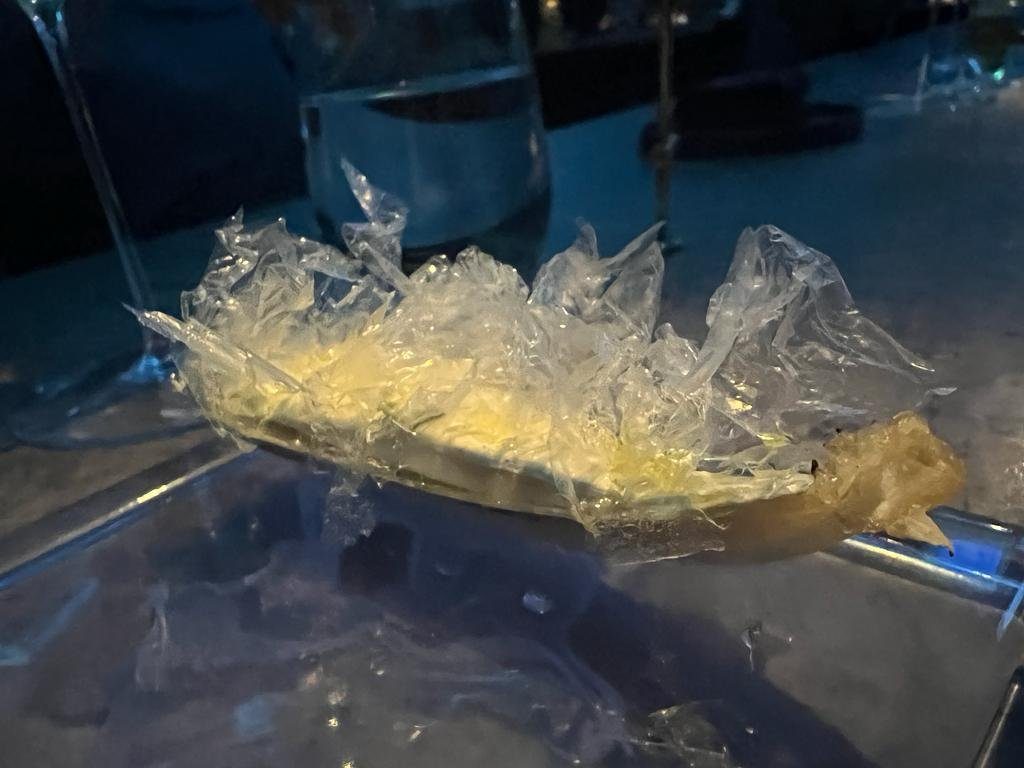
Stuffing the predator king crab with its natural feed, like scallops and langoustine, was an interesting idea. The problem is that in this crab dish I tasted other components more than the seafood. It came with a rich and creamy orange koshu (instead of yuzu koshu) sauce with smoky butter placed on top of fried bread. The addition of fish roe added crunch, but an intense smokiness made it harder to appreciate the sweetness of either the langoustine or the scallop.
The strength of chef Rasmus Munk, the ability to concoct intense flavors loaded with umami, seem to be his Achilles’ heel too. At times he has a tendency to sacrifice the purity and clarity of his good products by manipulating them too much, and the succession of “complex and conceptual” dishes tire the palate. (Please note that the degree of aggressive smokiness I am discussing here is very different than the type of subtle smokiness associated with the Spanish asadors, such as Etxebarri.)
While I appreciated long and well-intentioned narrative regarding all the ills that plague the planet while presented with each “impression”, I thought they went a little overboard in parroting a well-rehearsed narrative. I had to warn them in this regard, so that I could concentrate on wine and food.
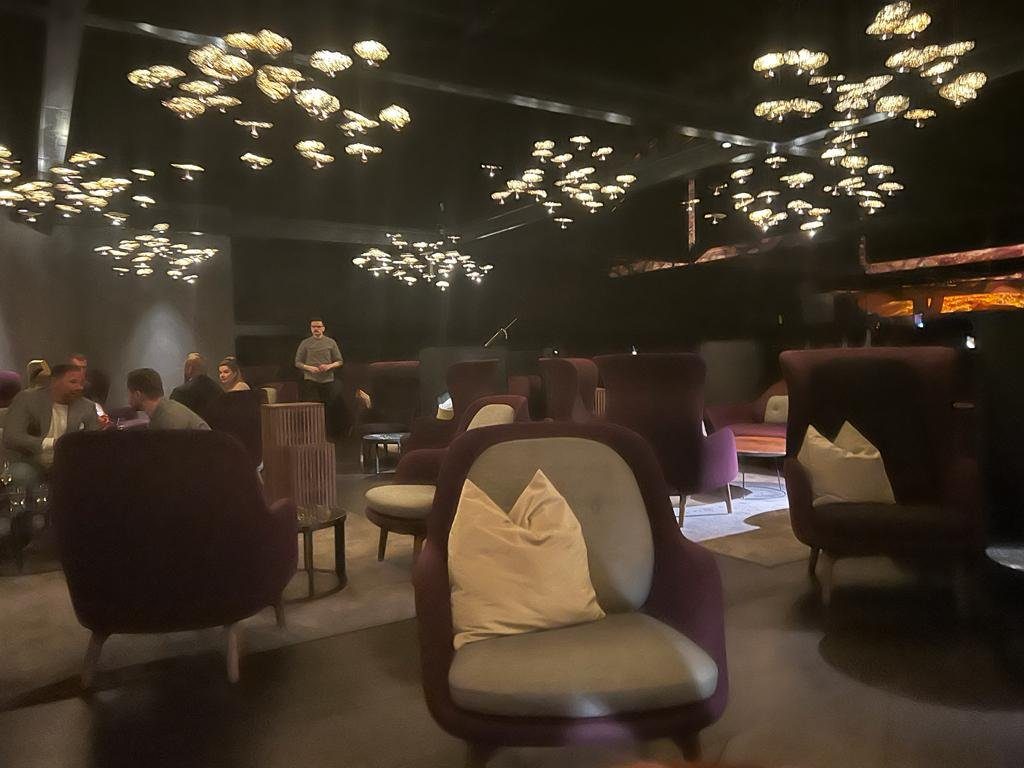
Fortunately, some impressions left a gustatory mark. I saluted the chef for being the only one among the three restaurants I tried in Copenhagen that offered a meat course. I also like pigeon. The pigeon they served was a farmed Anjou pigeon. (Although it was farmed, it tasted like wild wood pigeon.) To deepen the taste, they dry aged the pigeon by covering it with a wax for two weeks. They then cooked it sous vide in the wax, peeled off the wax and let it rest. They roasted it for a minute before serving it. They added a rich and intense sauce made from pigeon bones, offals, clarified butter, juice of fermented red berries, and black truffles. The sauce was stunning, the pigeon was soft and intense, but perhaps because of the sous vide cooking, it was too soft and did not have a crusty skin. I liked the pigeon very much and appreciated their work, but I believe roasting in a wood fired oven or grilling the pigeon, after the “faisandage” of two weeks, would make it even better.
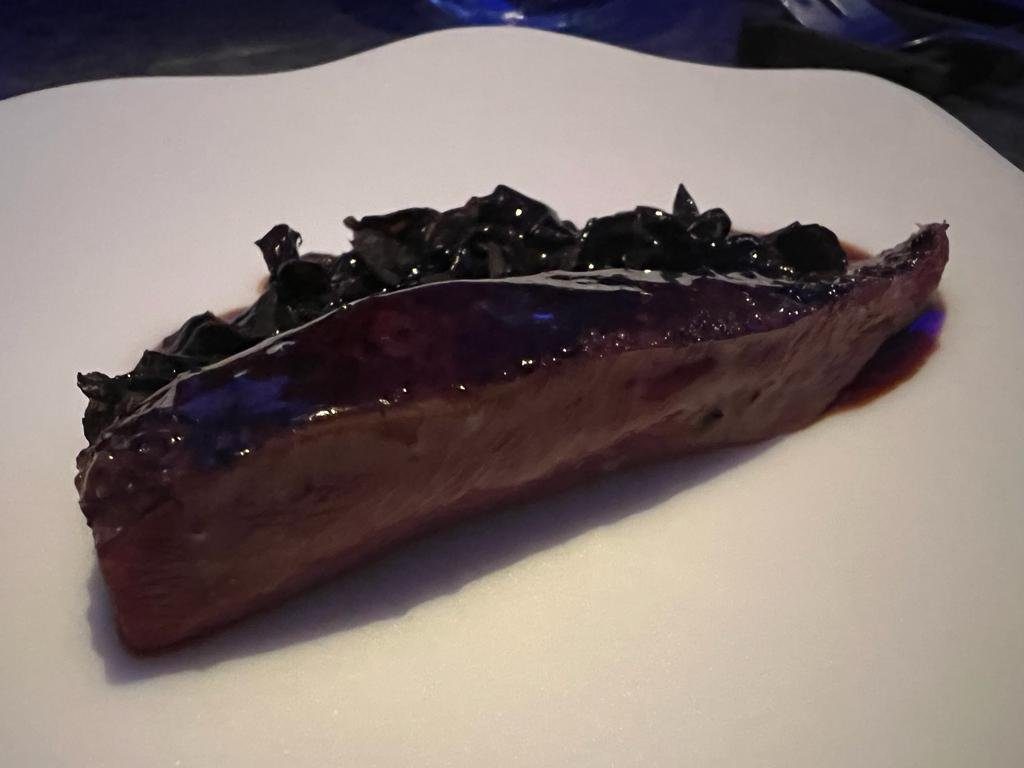
At the end of six hours, we sat on the balcony, and obviously, we were quite tired. We were tired, not just because of the gastronomic marathon, but also because of ALL the non-gastronomic, extraneous knowledge with which they tried to fill us. I certainly sympathize with their ideological mission, but there is a mismatch between the venue (an expensive gourmet restaurant) and the type of knowledge they are transmitting to us. Constant bombardment with slogans and new knowledge (both are the case here), while heavily wining and dining, amount to patronizing and detract from pleasure. I guess they will respond by saying that what they seek is not to maximize our pleasure but to stimulate our senses, our brain and our consciousness at the same time. But what they get is the very opposite and unintended effect: one feels frustrated when very serious issues, like climate change, gets trivialized.
All said, Alchemist is an intense ride worth having at least once.
EVALUATION: 15.5/20
JORDNAER
This is a very good restaurant where chef Eric Vildgaard cooks beautiful and delicious dishes mostly combining seafood, aromatic oils, macerated fruits and fermented greens. His sense of calibration of different flavors is remarkable, and he uses very good products. Unlike other highly praised restaurants in Scandinavia, he does not put a premium on molecular techniques and chemical ingredients to wow clients with unusual textures and amazingly picturesque presentations.
All said, my sense after dining here was that he can do even better. I made this point to Mr. Vildgaard when he came to our table after the meal to inquire about our reactions. I pointed at couple of the dishes that I thought were extraordinary and told him about my criticisms. One was the absence of some amazing shellfish, such as sea urchins that you find in Scandinavia. The chef is very generous with expensive ingredients, such as caviar, but I thought he played too safe with his choice of fish/shellfish and the range of products he uses. He acknowledged that his local clients are rather conservative in taste.
Secondly, I questioned his penchant for soft textures that comes at the expense of the rich-oily textures of the fish and collagen. I noticed that celebrity chefs in Scandinavia find it desirable if the seafood is so tender that you can eat it with a spoon, like a jelly. I don’t know if this is a fashion inspired by the ascendance of Japanese cuisine or driven by the preference of Michelin inspectors. It is also possible that most diners prefer to eat that way. That is why many chefs use tenderizers (chemicals) or cook fish sous vide or in steamed oven. But I get disappointed when I encounter “cod-dashi-green onion” or “turbot-langoustine-yuzu” in too soft textures and without enough punch as it happened here and elsewhere in Scandinavia. Not to be misunderstood, I must add that I do appreciate poaching certain fish in aromatic bouillon. What I am complaining about here is the use of methods to render fish too soft while neutralizing its flavor and removing all the bones before cooking. Also please note that the soft textures I encountered in Scandinavia are very different than textures sought by edomae sushi masters in Japan who decide how long to age seafood depending on its properties.
Fortunately, most of the meal was excellent. The products used by the chef were in pristine condition, and his sauces and condiments enhanced the purity of the main ingredient without overpowering it. Besides, he was generous with caviar as we had two dishes with Oscietra caviar. The first was a tart. The tart was filled with bluefin tuna belly flavored by an excellent aged soya sauce and fresh wasabi, and topped with platinum caviar from Belgium and shiso flowers. The dish was rich, luscious, creamy and the shiso flowers added crunch and cumin-like spice.
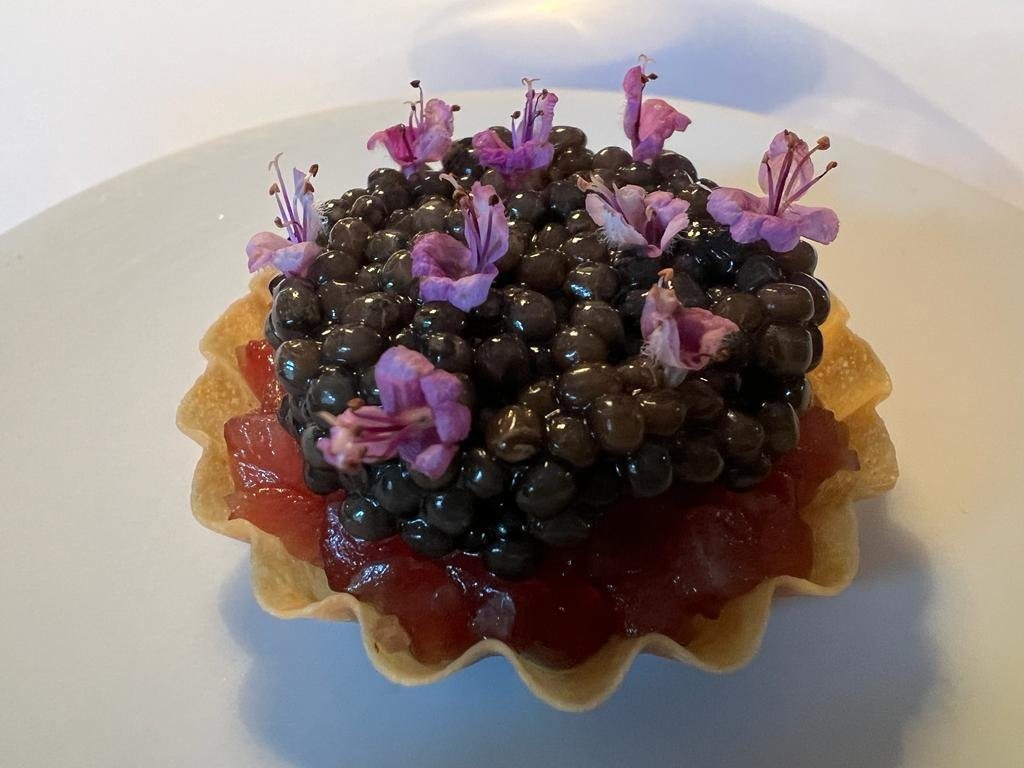
The second caviar dish was also interesting. The salty-sweet taste of caviar married well to a sauce of walnut milk made from walnut extraction, roasted walnut oil and fresh walnut. The walnut milk was actually sweet and not bitter tasting, and this unusual combination worked.
One bite I found excellent was “Rosset Waffle, Baerii Selection Caviar, Fjord Shrimps”. The crisp waffle, filled with crème fraiche, lemon zest, dill, Norwegian Fjord shrimp, and more caviar on top. It was wweet, salty, and creamy; a fun dish that you eat in one bite.
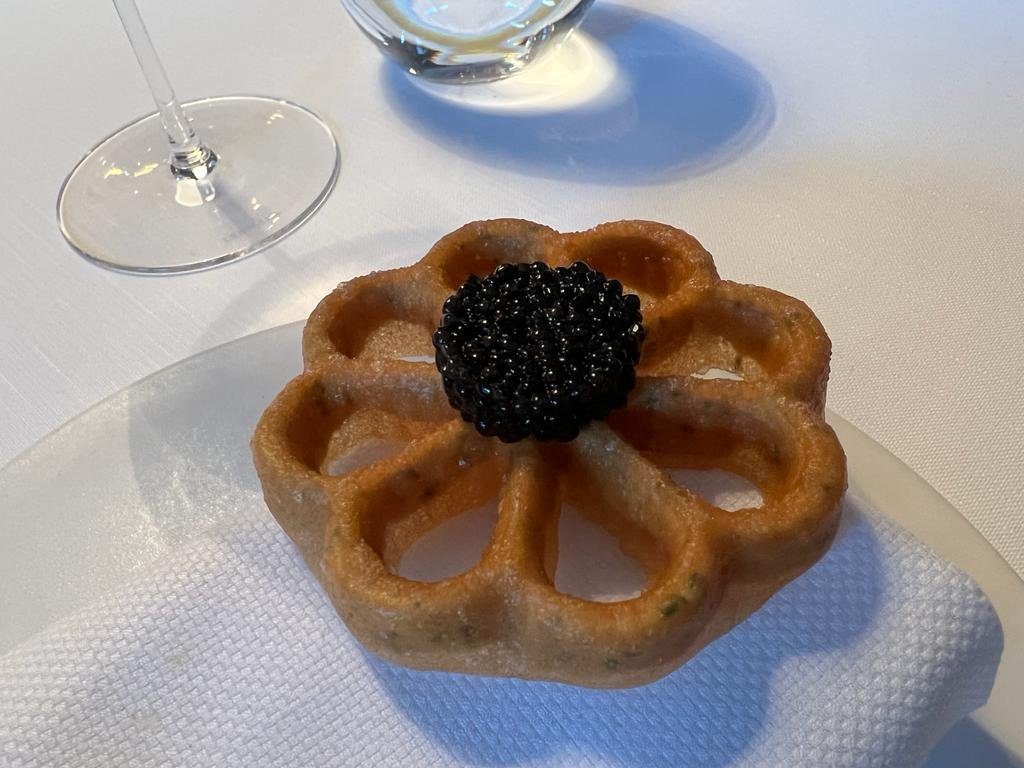
But the real masterpiece which followed the very well-conceived and executed scallop, langoustine and oyster dishes was the one where Norwegian fjord shrimp played the leading role. The description, i.e. “Raw Shrimp-Wasabi-Dill,” and the appearance of the dish that you can see from the photo, look deceptively simple. Yet tasting this simple concoction of complimentary and well calibrated ingredients was a testimony to the old adage that sometimes true simplicity is the hardest to achieve. If there is one sentence that describes this dish it may be that “ocean-like sweetness that is brought into focus by the spicy bite of wasabi and the refreshing breeze of fresh dill”.
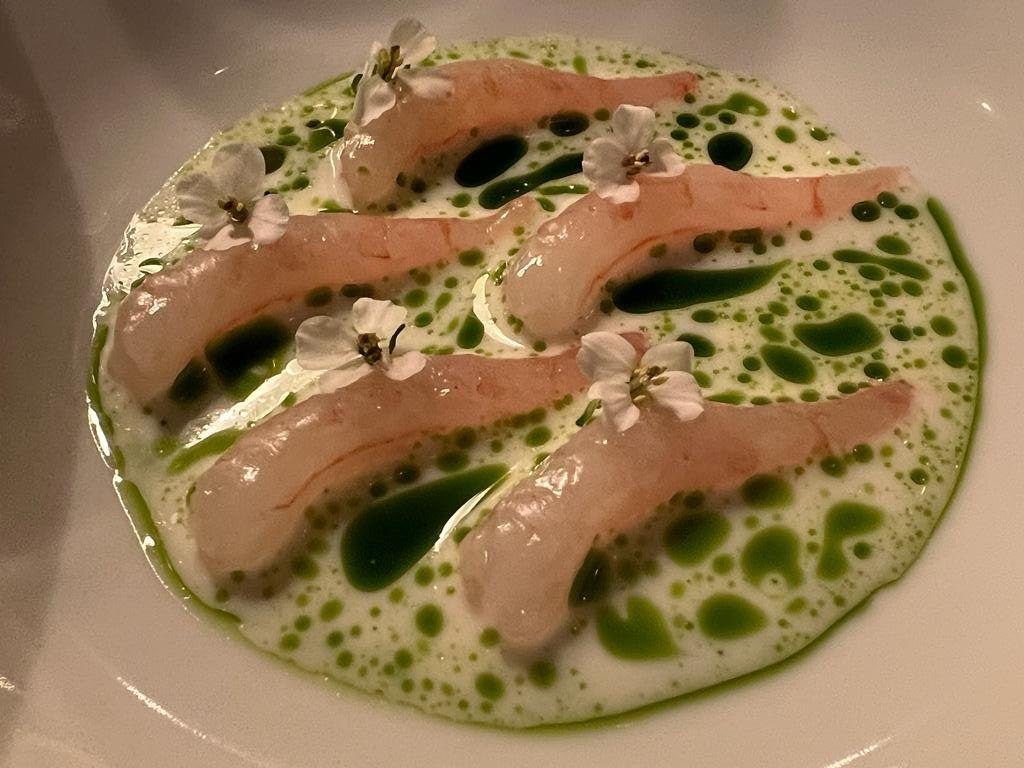
We have also noted the chef’s mastery of French techniques when we tasted his flan (royal) of lobster with asparagus, and his mastery of sashimi when we were served hamachi with sesame and ponzu and akami maguro tuna with truffle and pickled ransom.
Finally, we also found the desserts here, such as “truffle-hazelnut-salted caramel.” more satisfactory and straightforward than at other restaurants.
EVALUATION: 16.5/20
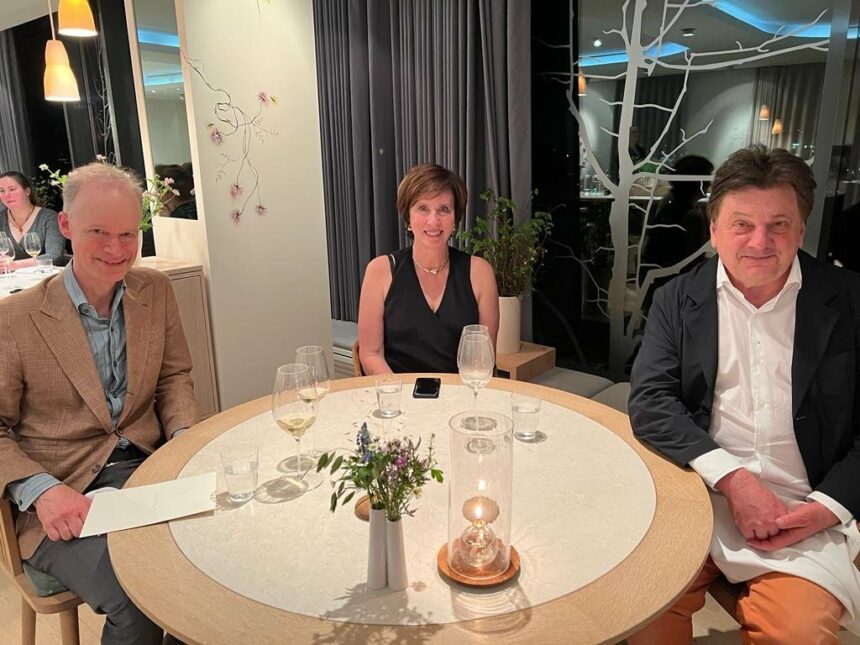
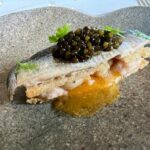

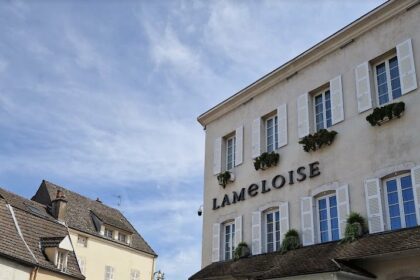
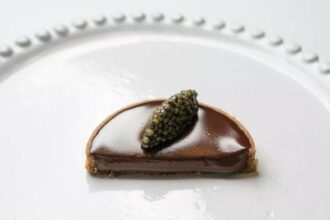
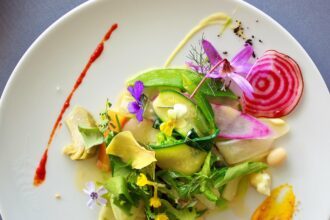
How on Earth is shirako a fermented product or a sauce rich in umami?